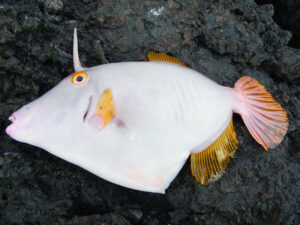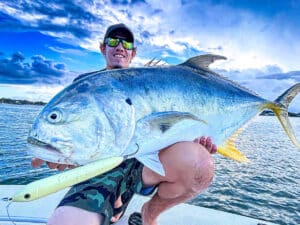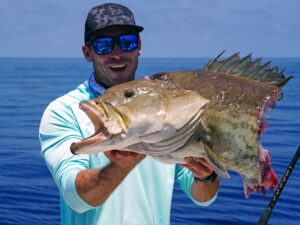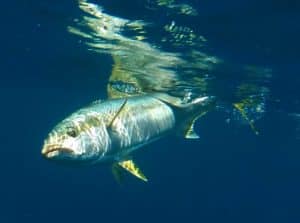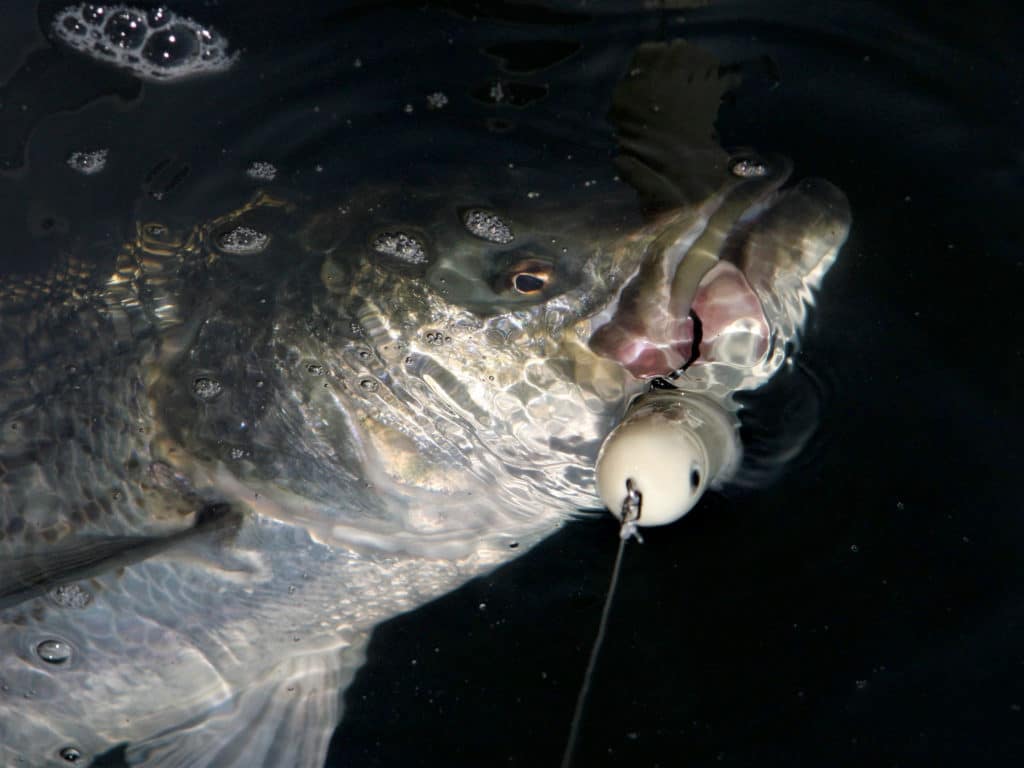
A couple of years ago, fishing partner Elliott Taylor and I drifted atop a conveyor belt of saltwater on the lower Connecticut River in Old Saybrook, Connecticut. As I cast a surface plug off the stern, we heard a whooshing noise like a bucket of water dumped into the river. I turned to see the lingering froth left by a big predator. Slammer bluefish and striped bass had invaded the river mouth, and we were poised for some wild battles that afternoon.
The lower or most-southerly portion of the Connecticut River is saltwater, and it separates the coastal towns of Old Saybrook on its western bank from Old Lyme on its eastern bank. The last seven miles of the river is a striper and bluefish haven, thanks to the abundance of bait in this large estuary.
North of the Bridge
Hamburg Cove lies 4 miles north of the Interstate 95 boat launch and bridge. This special cove is one of the first Northeast locales to hold feeding stripers each spring, and its schoolie fishery is world-class: a sure cure for cabin fever from mid-March to mid-April before action heats up farther downriver and in Long Island Sound. (Note: Fishing north of the I-95 bridge requires a freshwater/inland or all waters fishing license.)
After late April, the cove’s schoolies swim into the main river and downstream to the mouth and eventually into open water, where they mingle with adult bass. Located on the east side of the river, the cove is protected on three sides by hills and sheltered from raw spring winds. Hamburg Cove also appeals to boating anglers because it lacks prop-bending obstacles like rocks yet it’s shallow enough for fly or light spin tackle.
The stripers found here in early spring generally measure 14 to 20 inches. Numbers, not size, becomes the objective. Fan cast or troll small lures or tubes until you locate a school. Stop and drift with the fish to catch 50 to 75 fish on a given tide.
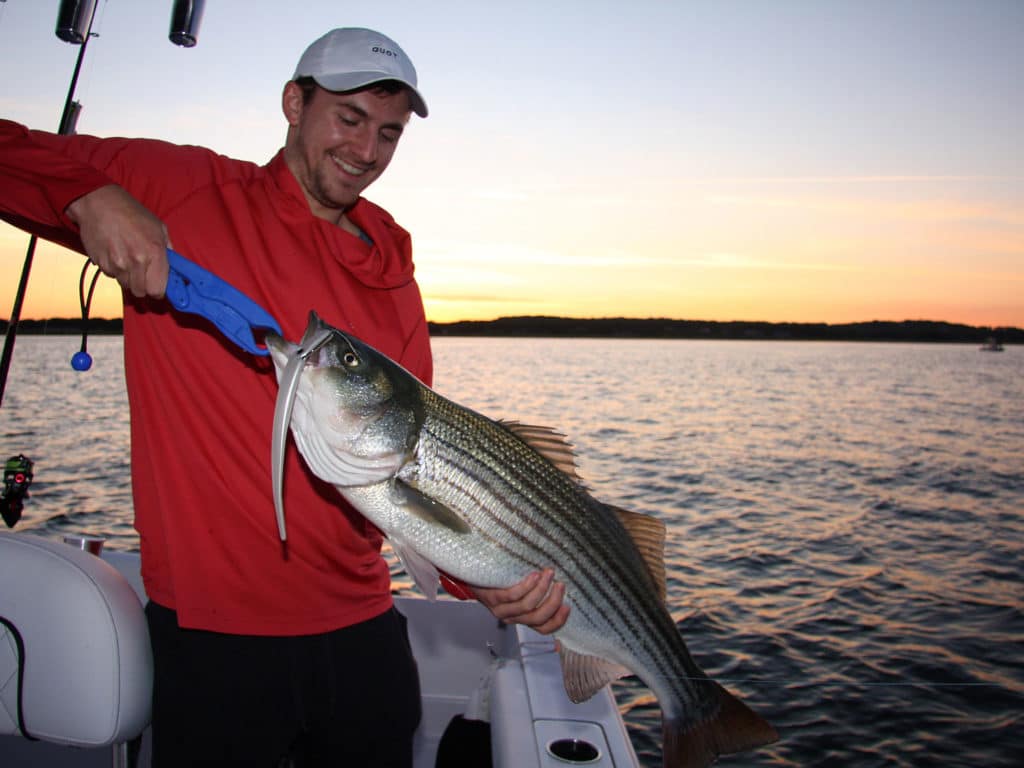
If you prefer to target bigger fish, large stripers do invade the north side of I-95. At one perennial hotspot—day marker 25 at the lower mouth of South Cove, which is on the west side of the river halfway between Hamburg Cove and the I-95 Bridge—bass in the 30- to 40-inch range set up to feed on herring, alewives, and menhaden starting in late April and running through June.
Motor 50 yards north of the marker on a running tide and drift south along the reef edge, fishing deep with large swimming plugs. During slow current periods, these fish sometimes come up and inhale surface plugs like the 5-inch Rapala Skitter Pop or the 7-inch Lil’ Doc. Beginning in late May, bluefish mix in and provide hard-hitting action as they follow menhaden schools in from the ocean.
South of the Bridge
Downriver and south of the I-95 Bridge, an excellent late-spring fishery starts at the northern confluence of the Back and Connecticut rivers, in an area called the Wood Lot. Here you can idle into a transition zone where the depth quickly changes from 4 to 10 feet. But do so quietly to prevent spooking the fish, especially on calm days.
Cast a medium-fast spinning outfit toward the shelf, and retrieve a soft plastic, like the Game On! Big Occhi, or a surface plug across the drop-off. Drift with the current and continue fan casting until you locate a pod of bass. The fish typically stalk the shallows, but you should explore the deep side too.
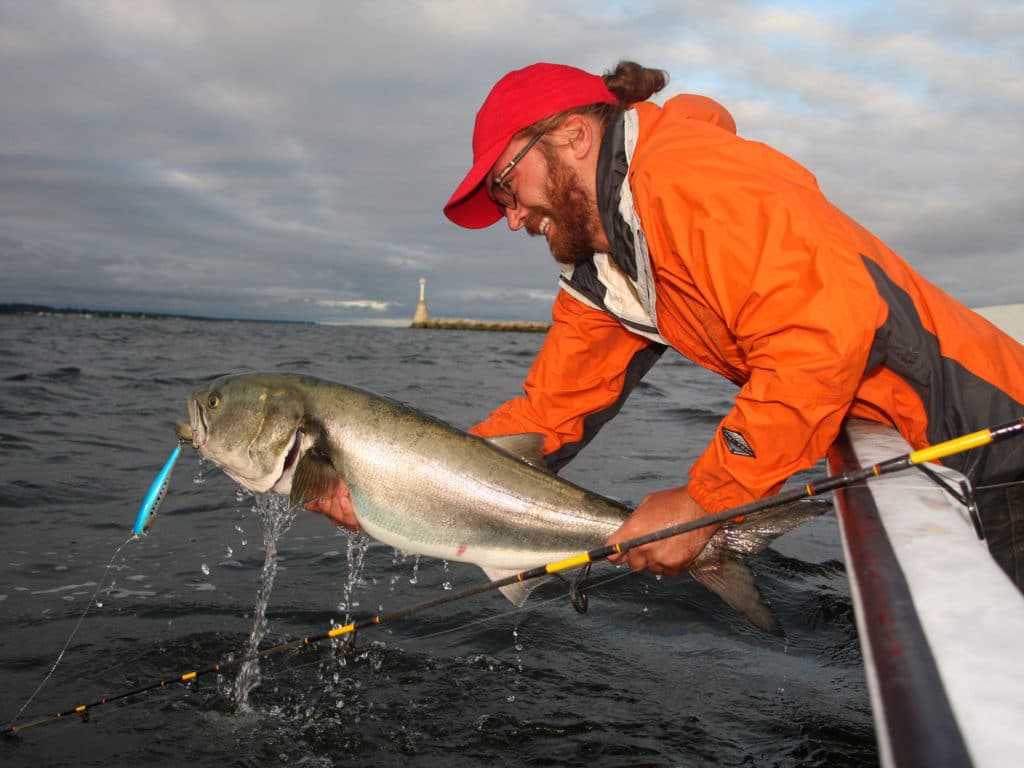
If you don’t find fish or when the bite wanes, motor south to Gibraltar Rocks—three large, clearly defined boulder fields. Anchor up, but heed your chart plotter and be cautious of subsurface rocks. Cast up or across current and retrieve just fast enough to keep a small swimming plug or metal lure from hanging bottom. Schoolie bass and hickory shad await prey in the slower and deeper water.
Farther seaward and just east of Buoy 10 lie Sodom Rocks, another perennial hotspot. Continue south from there to find another cluster of rocks and a small marsh island to cast to just east of Buoy 8. Griswold Piers, just south of Buoy 8, is a fishy area punctuated by three small rips. Finally, at the river mouth, cast to sandbars and the breakwaters, which provide good action on an ebb tide.
On a flood tide, work back upriver toward the Wood Lot. Begin by fishing the Great Island shore just north of Poverty Point, this time in the shallow 3-foot zone within casting distance of shore. From there, try spots like Great Island (south of the bridge) or Calves Island (north of the bridge).
If you’re new to fishing this area, be cautious of rock piles out of the main channel in the lower river, many of which are the remains from the days of haul seining. While these boulders attract fish, they can badly damage an outboard.
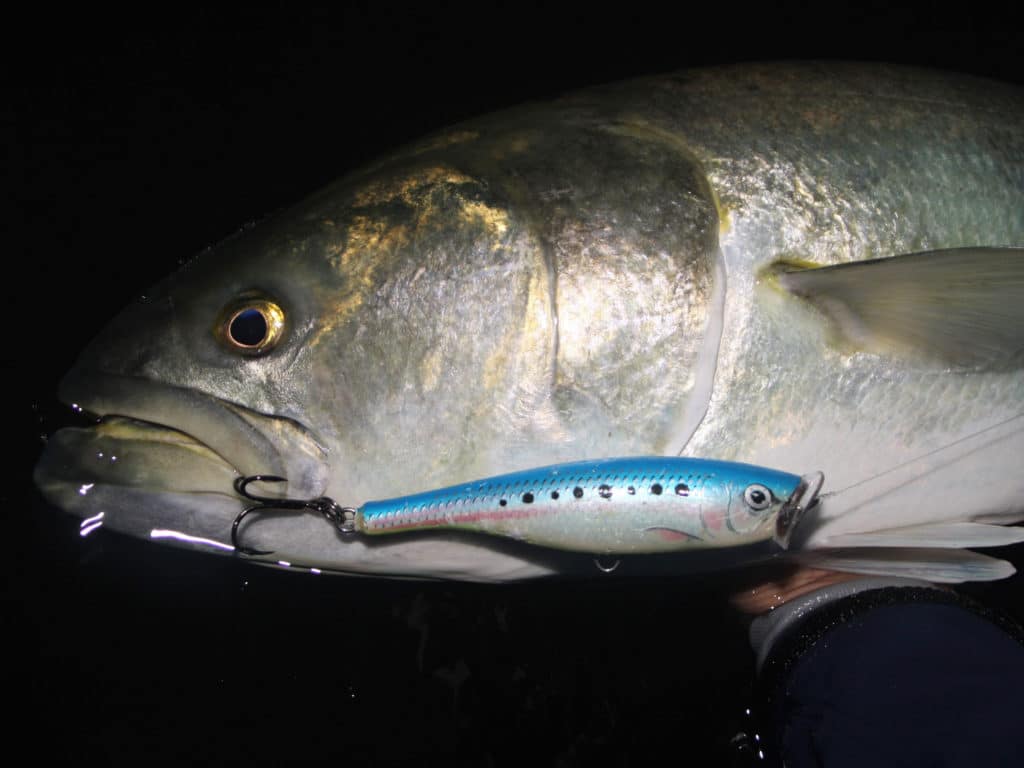
On the west side of the river lies Ragged Rock Creek and a rocky bar. These areas produce from late April into early summer. Some spots are shallow, but the area is lightly fished compared with others. Slightly downriver you’ll find a bridge and North Cove, which offers more structure than the Old Lyme side. This lower waterway near the main channel hosts monster bluefish in late spring and late summer as they maraud schools of adult menhaden. A large surface plug brings exciting topwater action during low light, when baitfish schools draw bluefish from Long Island Sound.
Whether fishing or just exploring the lower Connecticut River by boat, the beauty and diversity of this huge estuary is hard to match anywhere in the Northeast. Bluefish, striped bass, and baitfish are abundant, and you can usually fish the river when conditions on Long Island Sound are too windy.

